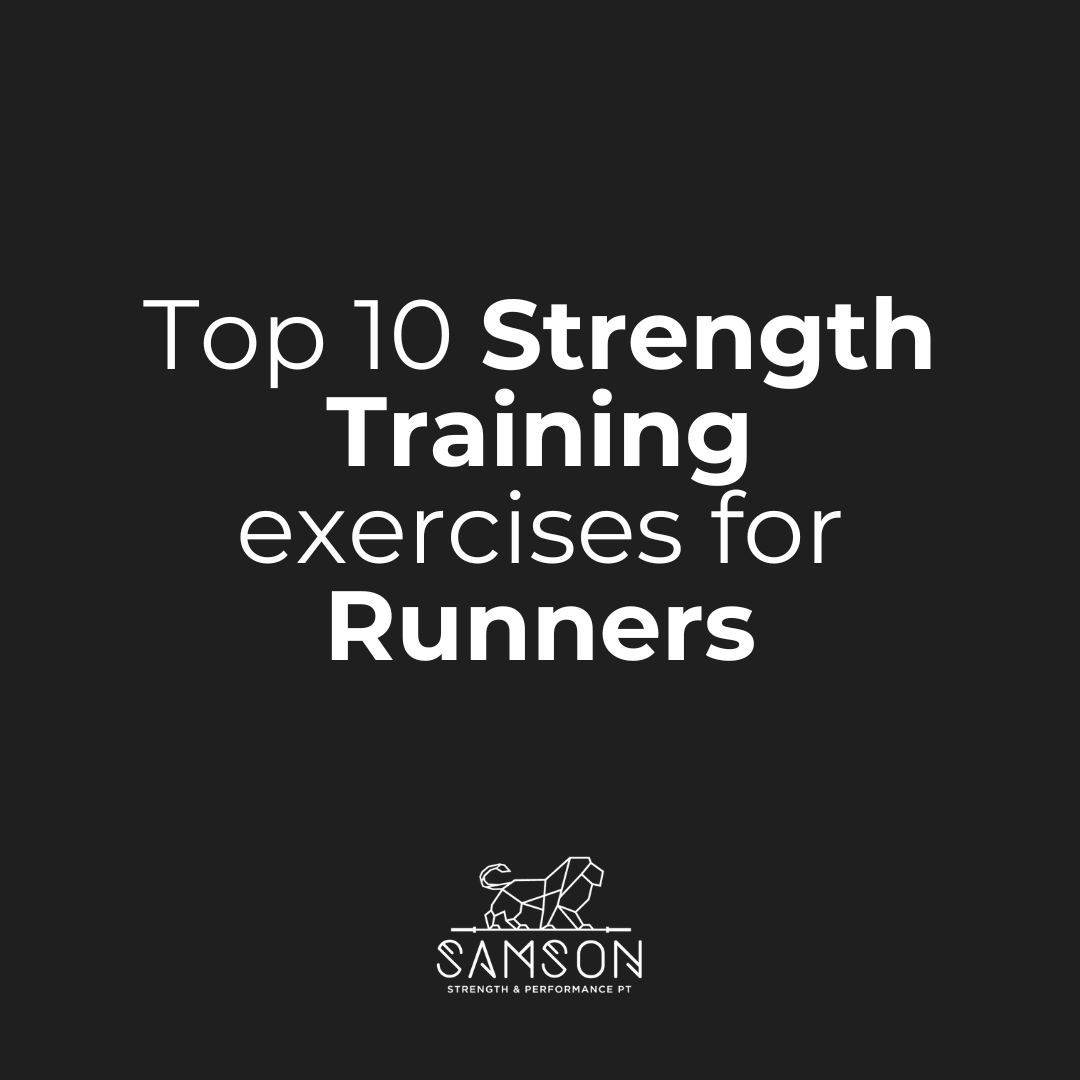Top 10 Strength Training Exercises for Runners
Looking to improve your mile times or preparing for an upcoming race? Look no further than a kettle bell and some resistance bands. While most runners LOVE to run, not as many are willing to wake up before the sun to hit the gym and focus on strength training.
BUT, if you want to increase your speed, build your tolerance to long runs, and decrease your risk of developing running related injuries, strength training needs to be a consistent part of your programming.
Here the top 10 strength training exercises for runner you can add into your routine to improve your running efficiency and help keep you injury free.
1. Four-Way Taps: This exercise can be performed on flat ground, on a slightly elevated surface, or even on a wedge to bias the quads. Start in a single leg stance and with a smooth, controlled motion, tap the heel of your “swing leg” forward, out to the side, straight behind, and finally behind and across your body in a posterior-medial direction (also known as a curtsy).
This exercise is great for building strength in the quads, loading the patellar tendons, and stabilizing the lateral hip muscles. Running is essentially a series of repeated single leg stances, so we need to build up the endurance of those glute meds!
2. Farmer March: Grab two heavy kettlebells or dumbbells and start by bracing your abdominals. With your toes pulled up toward your shin, march one leg to a 90-90 position (with 90 degrees of both hip and knee flexion) so that your thigh is parallel to the ground and your knee is bent to a 90 degree angle. Hold this position for 2-3 seconds, then switch legs. Be sure to keep your shoulders level during this movement and try not to lean to one side while balancing on one leg.
This exercise is a great bang for your buck, because it challenges your core stability, hip flexor strength, and single leg balance all at the same time.
3. Feet Elevated Psoas March with Hip Extension: Lie on your back and place your heels on an elevated surface, such as a step or bench. Loop a band around the middle of each foot and lift your hips off the ground. Without letting your hips sink toward the floor, drive one leg up into a 90-90 position (with 90 degrees of both hip and knee flexion). Hold this position for 2-3 seconds, then switch legs.
Strong hip flexors are critical for quick turnover during the swing phase of running gait, but are often neglected in the gym, so be sure to add these in if you are looking to build speed.
4. Side Stepping with Band: Start in a mini-squat position and place a loop band around the middle of each foot. Keep some tension in the band and maintain a soft bend in the knees and hips as you take several steps sideways, then work your way back to your starting point. If you are unable to maintain good knee-ankle alignment with the band around your midfoot, move the band up around the mid-shin or even above the knees to decrease the difficulty of this exercise.
This exercise is a great challenge for the lateral hip muscles, which are important for stabilizing the knee during the stance phase of gait. It’s also great, because placing the band at the feet challenges the muscles on the outside of your shins, called your peroneals, which are essential for stabilizing your ankles on uneven terrain during trail runs.
5. Alternating Heel Raises: Start with one foot flat on the floor and the other foot up on a step or bench. Grab a heavy kettlebell and rest it on top of the elevated knee. Alternate lifting the heel of the bent knee, then the heel of the straight knee and perform this exercise on both sides. To increase the difficulty of this movement, hold a kettlebell at your side of the leg that is on the floor and feel the burn!
Our calf muscles and achilles tendons undergo repeated, heavy loading while running, so it’s important to train these tissues to tolerate that load.
6. Single Leg Romanian Deadlift: Start in a single leg stance with both hands on the kettlebell. Keep your hips and shoulders square to the floor as you perform a hip hinge. Think about shifting your hips backward as your chest falls forward, then return to the starting position. To keep yourself from losing your balance, anchor your big toe into the floor and make a stable foundation from your foot. Perform on both sides.
This exercise will challenge your glutes and hamstrings as well as your single leg balance, which are all critical throughout the running gait cycle.
7. Standing Tib Raises: In standing, lean your back up against the wall and walk your feet forward so that your heels are about 6-12 inches from the wall. Keep your knees straight as you pull your toes up toward your shins on both legs at the same time and hold this position for 2-3 seconds. To increase the difficulty of this exercise, walk your feet slightly farther from the wall.
This exercise is a great way to challenge the anterior tibialis muscles, which are responsible for pulling your toes up toward your shins during the swing phase of gait, as well as stabilizing both the ankle and the knee.
8. Side Plank with Hip Abduction: Start in a side plank position so that your elbow is directly under your shoulder and your hips and feet are stacked on top of each other. Lift your top leg up toward the ceiling and hold this position for 2-3 seconds. If holding a full side plank is too difficult, modify this exercise by dropping to your knee on the leg that is closer to the floor.
This is another excellent exercise to strengthen your lateral hip stabilizers, especially the glute medius, needed for knee stability in the stance phase of running.
9. Romanian Step Up: Grab a heavy kettlebell and a 6-12 inch box or step. Step up on the box and drive your swing leg up into a 90-90 position (with 90 degrees of both hip and knee flexion). Grip the floor with your big toe while in single leg stance to prevent yourself from losing your balance and hold that position for 2-3 seconds. Slowly bring your swing leg back behind you and bend your stance knee just enough to tap the toe of your swing leg to the floor and repeat.
This is another great quad exercise as well as a burner for your glutes and it translates well into running by simulating the swing phase of gait.
10. Copenhagen Plank with Hip Adduction: Get into a side plank position with your top foot and ankle resting on a bench or box and your bottom elbow resting on the floor. Lift your hips up toward the ceiling so that your top shoulder is in line with your top foot, then repeatedly lift and lower your bottom leg up and down. If you are unable to maintain the side plank with your ankle on the bench, slide downward and rest your knee on the bench instead.
This exercise is a great challenge for your inner thigh muscles, also known as adductors, which are extremely important throughout both the swing and push off phases of the running gait cycle.

